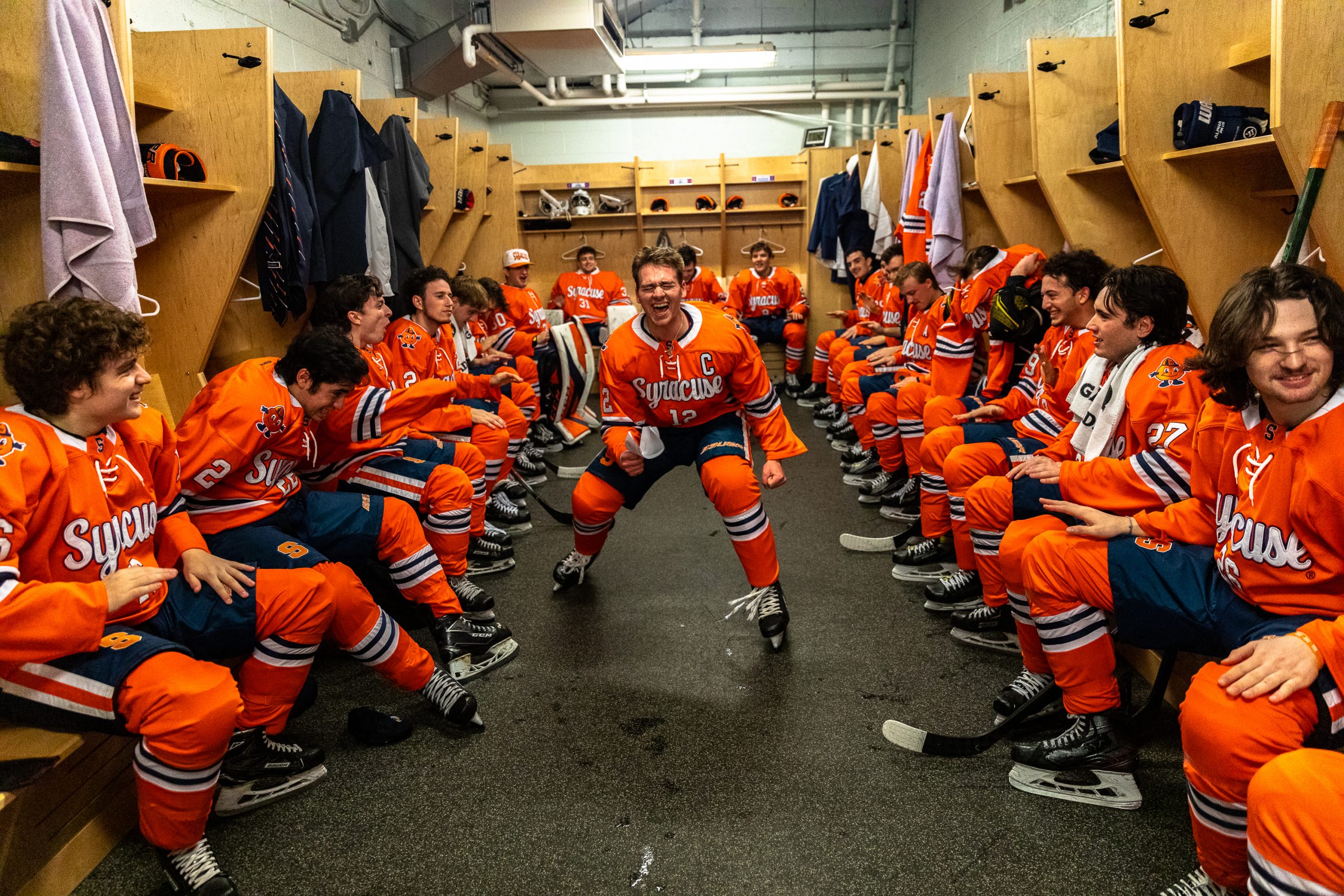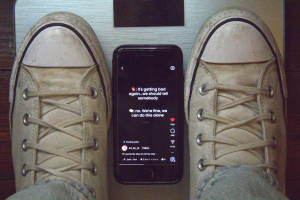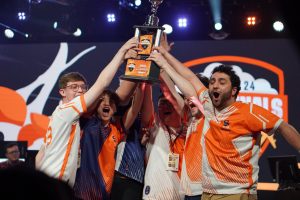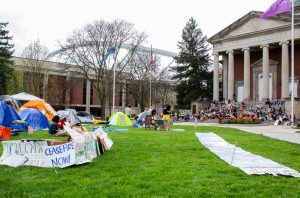Grit & Glory
Grit & Glory
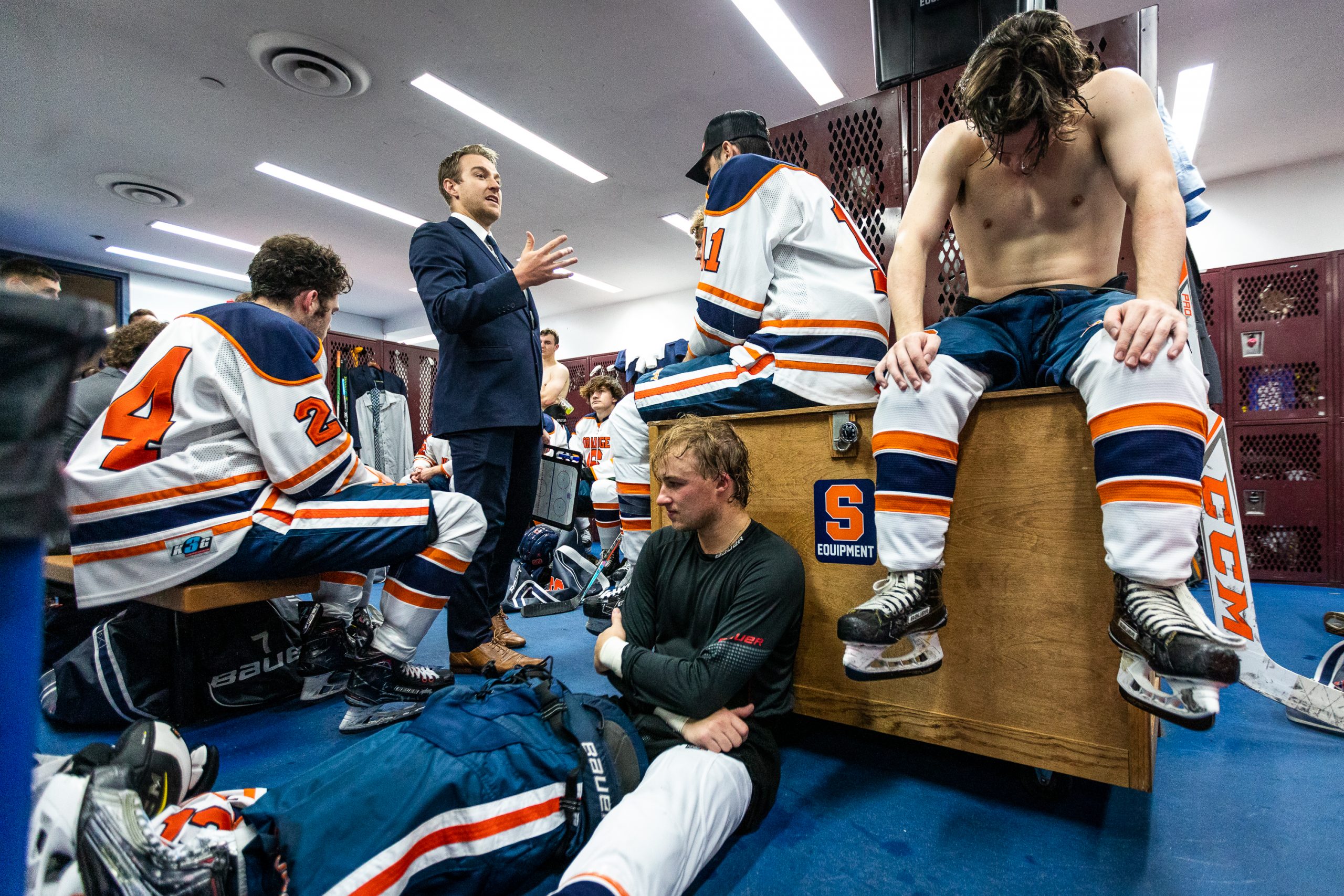
College athletes don’t typically schedule their own ice time, plan their own travel, or hire their own coach.
But that’s exactly what the players on the Syracuse club hockey team do, in addition to going to classes and playing a 29-game schedule that takes them from the University of Rhode Island to Drexel University in Philadelphia. They also plan their transportation, meals and lodging for trips, most of which are paid for out of their own pockets.
After the departure of their previous coach at the end of the 2020-21 season, the responsibility of finding a new one fell on the team. While the team spent three months searching for a new coach, upperclassmen were tasked with leading the players until they made the hire.
For Mackenzie Murphy, a junior defenseman and assistant captain, the completion of the hiring process was a relief and freed the players up to focus on the laundry list of responsibilities they have as student-athletes.
“Once we hired a coach ourselves, which not many college sports have to go out and do, it was really good,” said Murphy, whose teammates call him Murph. “It gave us an adult to talk to, consult with, and help lead us in the right direction to make better decisions for the whole club.”
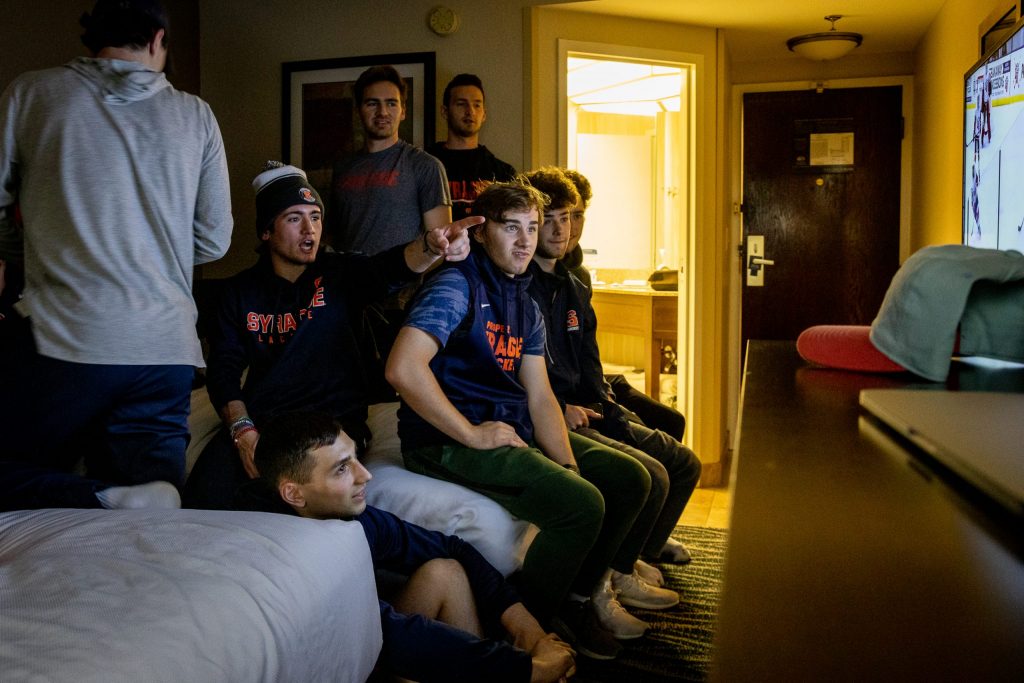
But that isn’t the only challenge the team had to overcome this season. The team made headlines this past September when the university started enforcing a policy on club sports teams that banned the use of the famous “Block S” on everything except the team’s uniforms. That included equipment, apparel, and all forms of branding, including on social media.
The policy was met with pushback from the men’s club hockey team as well as the club baseball team, which went as far as refusing to remove the logo from its social media accounts.
After protest from both teams and their supporters, Syracuse University reversed course, allowing the clubs to use the logos beyond just the uniforms.
“I will always remember coming off the ice from a practice and [Syracuse] had made the announcement that they were going to let us use the Block S,” Murphy said. “My phone had blown up, we were celebrating and everyone was hugging each other in the locker room.”
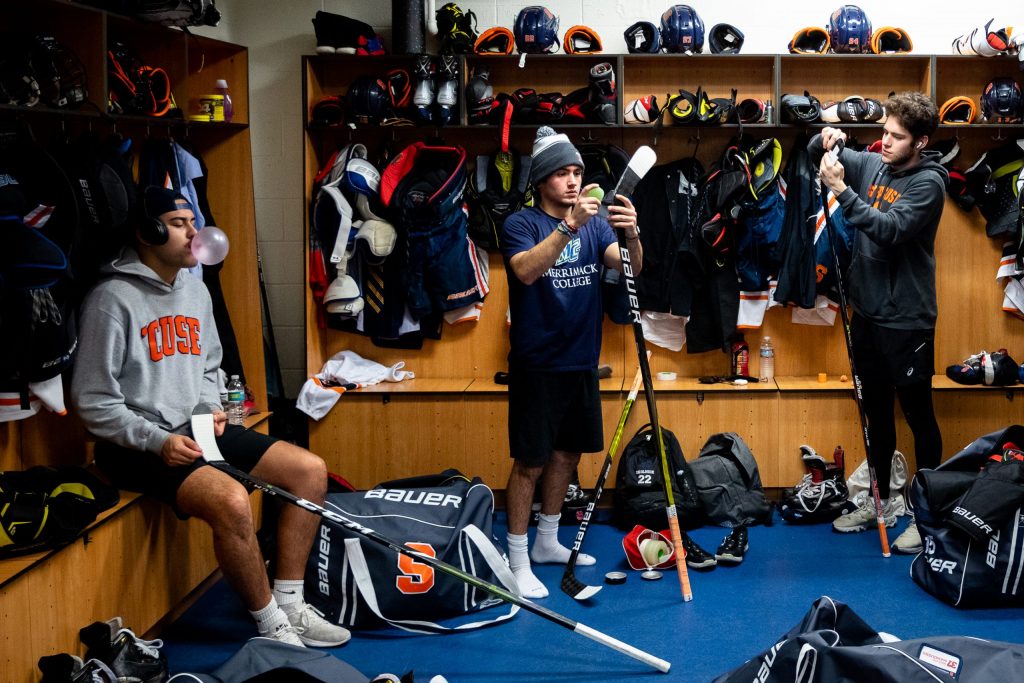
That’s the awe-inspiring thing about Syracuse club hockey, and the situation with the Block S epitomizes it. All they want to do is play the game they love and represent their university doing so. At the end of the day, it was a win, but the disrespect was felt.
“We travel the country representing our school, and we are proud to do that; yet the school isn’t proud that we do,” said senior forward Tim Kalinowski, who is also an assistant captain of the team. “They want nothing to do with us, which is so sad, honestly. It’s disheartening that I have to tell my parents that the school actually couldn’t care less about us.”
Murphy and Kalinowski, along with seniors Colin Morrow and Lucas Prestamo, performed most of the team’s administrative duties this year. Kalinowski felt the responsibility, but he’d rather focus on the sport he loves.
“I want to be a hockey player,” Kalinowksi said. “I want to just show up, stretch out, hang out with the boys and go on the ice. But the reality is that’s not what that is. That makes it really difficult.”
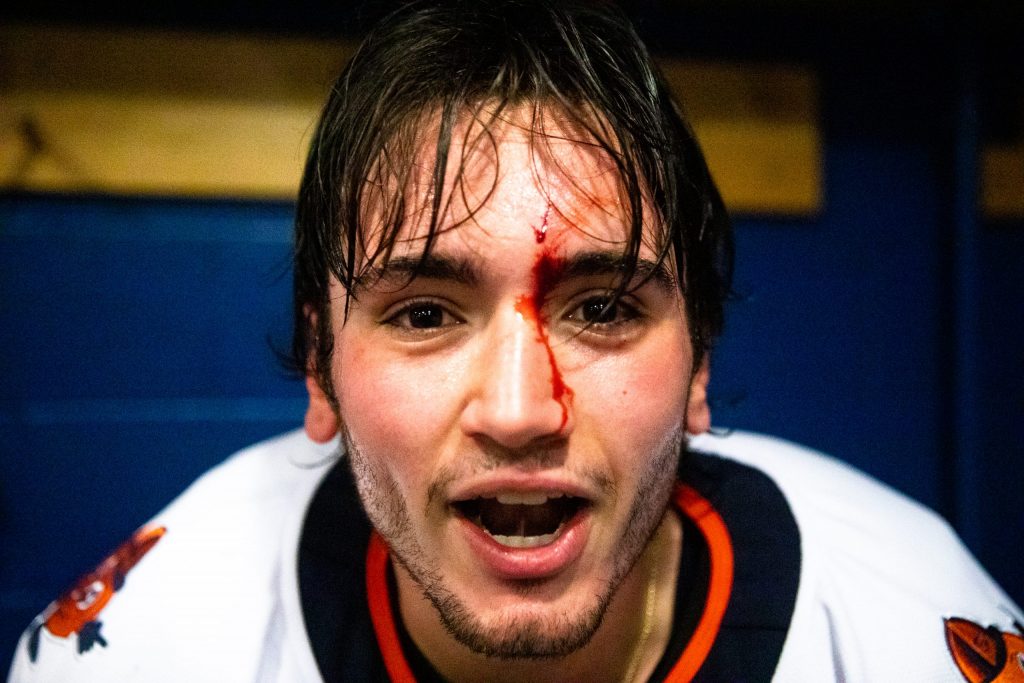
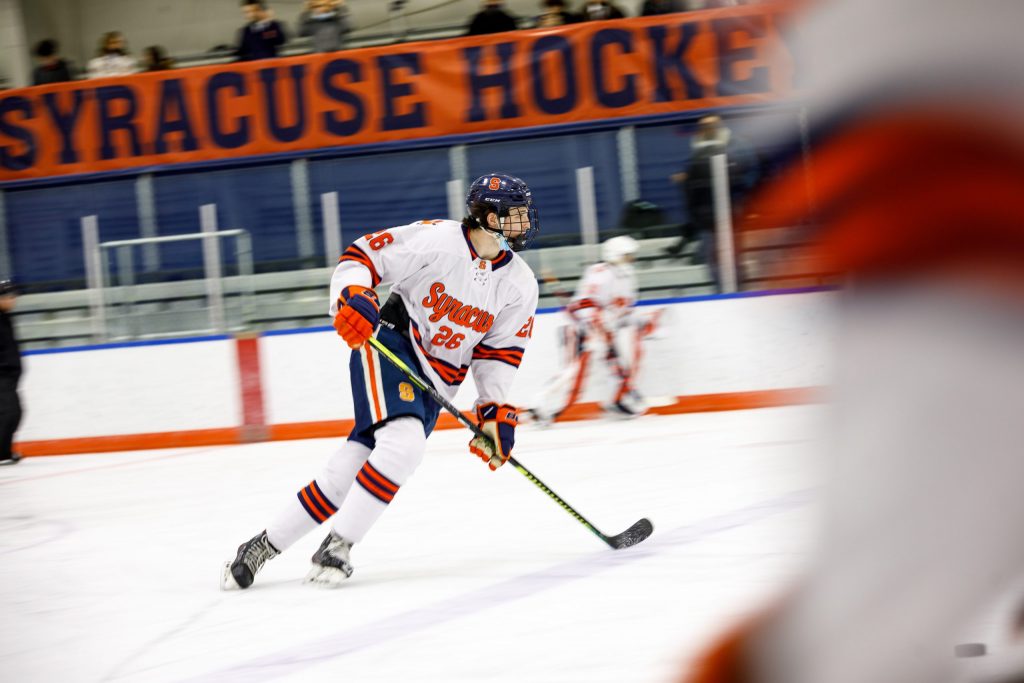
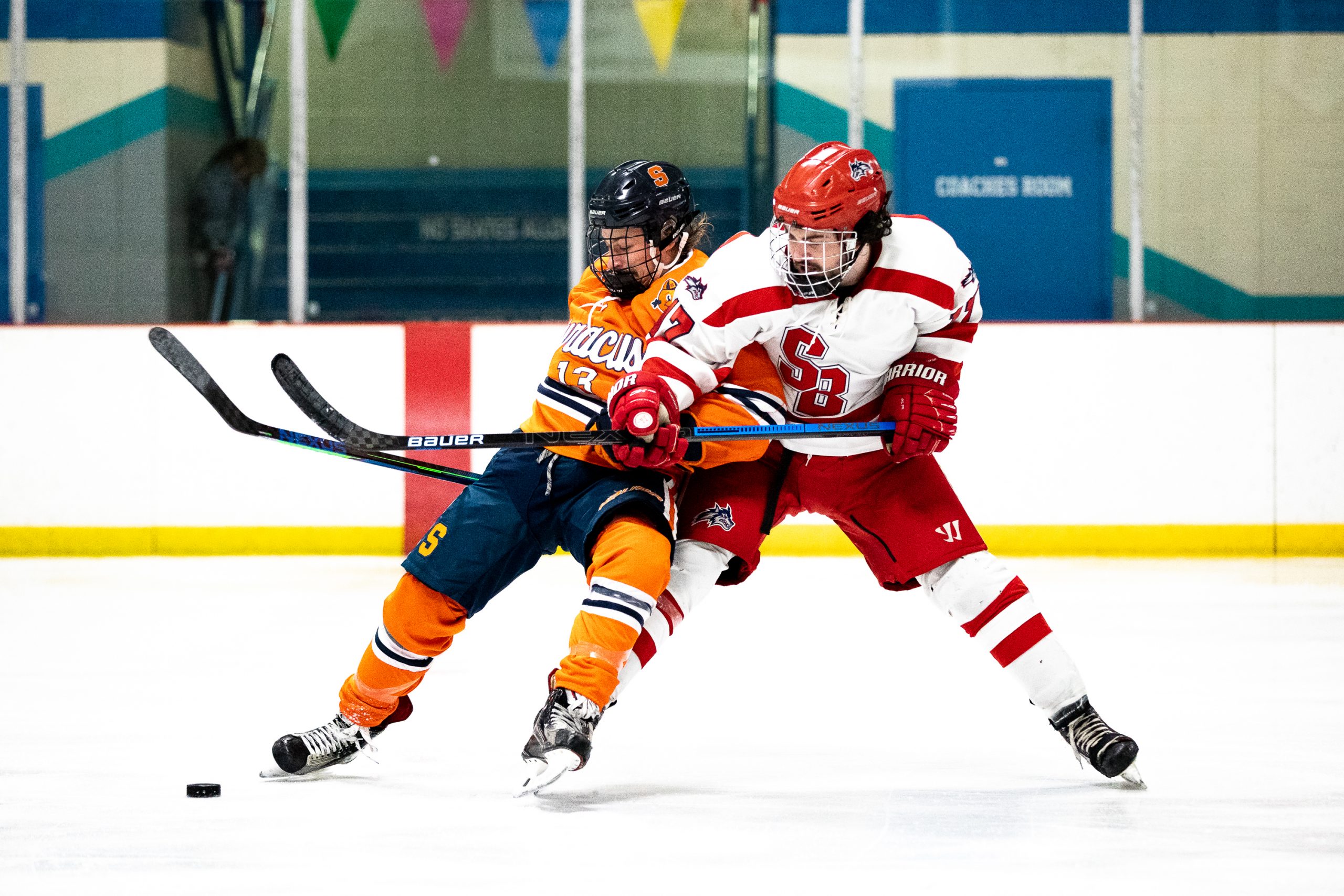
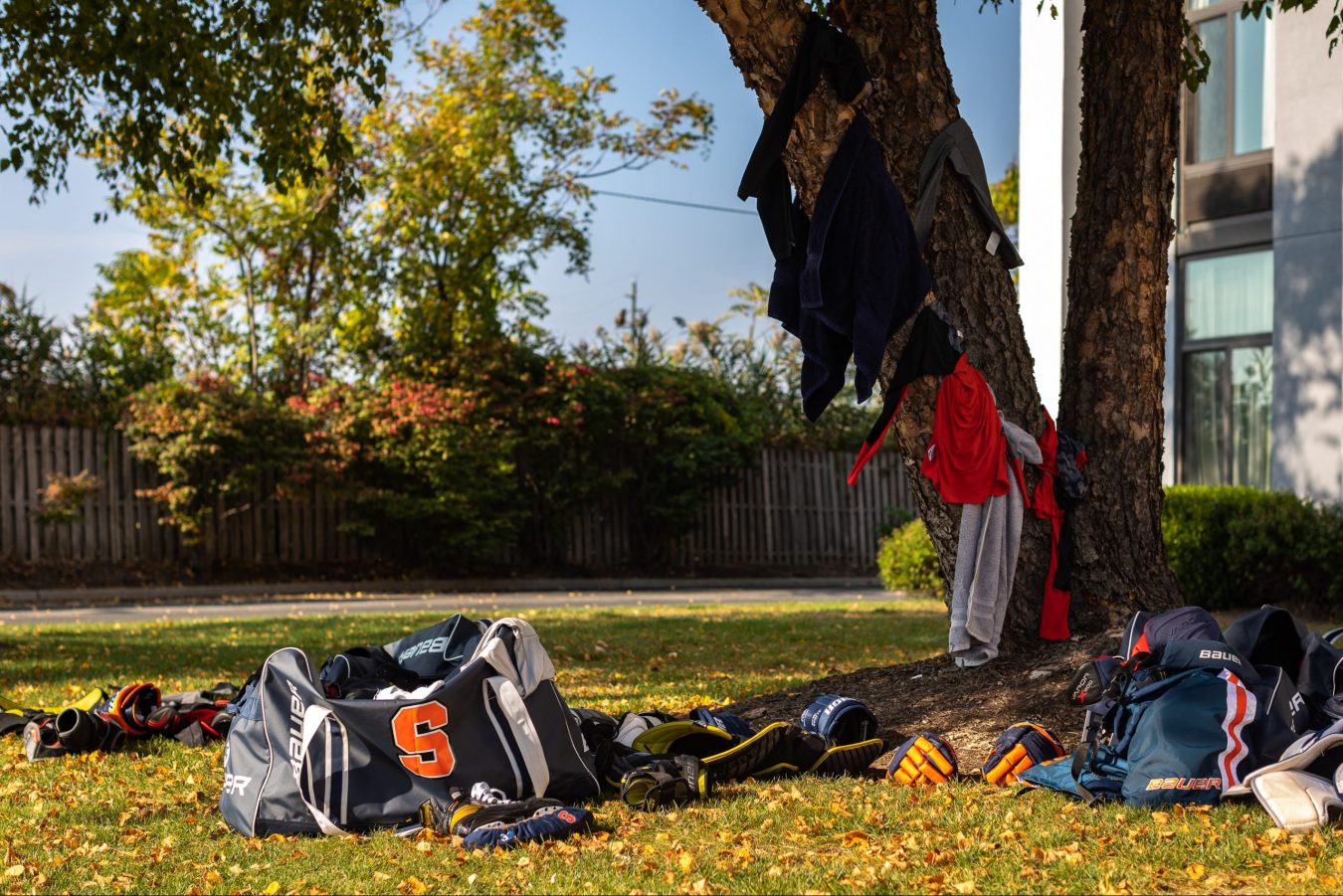
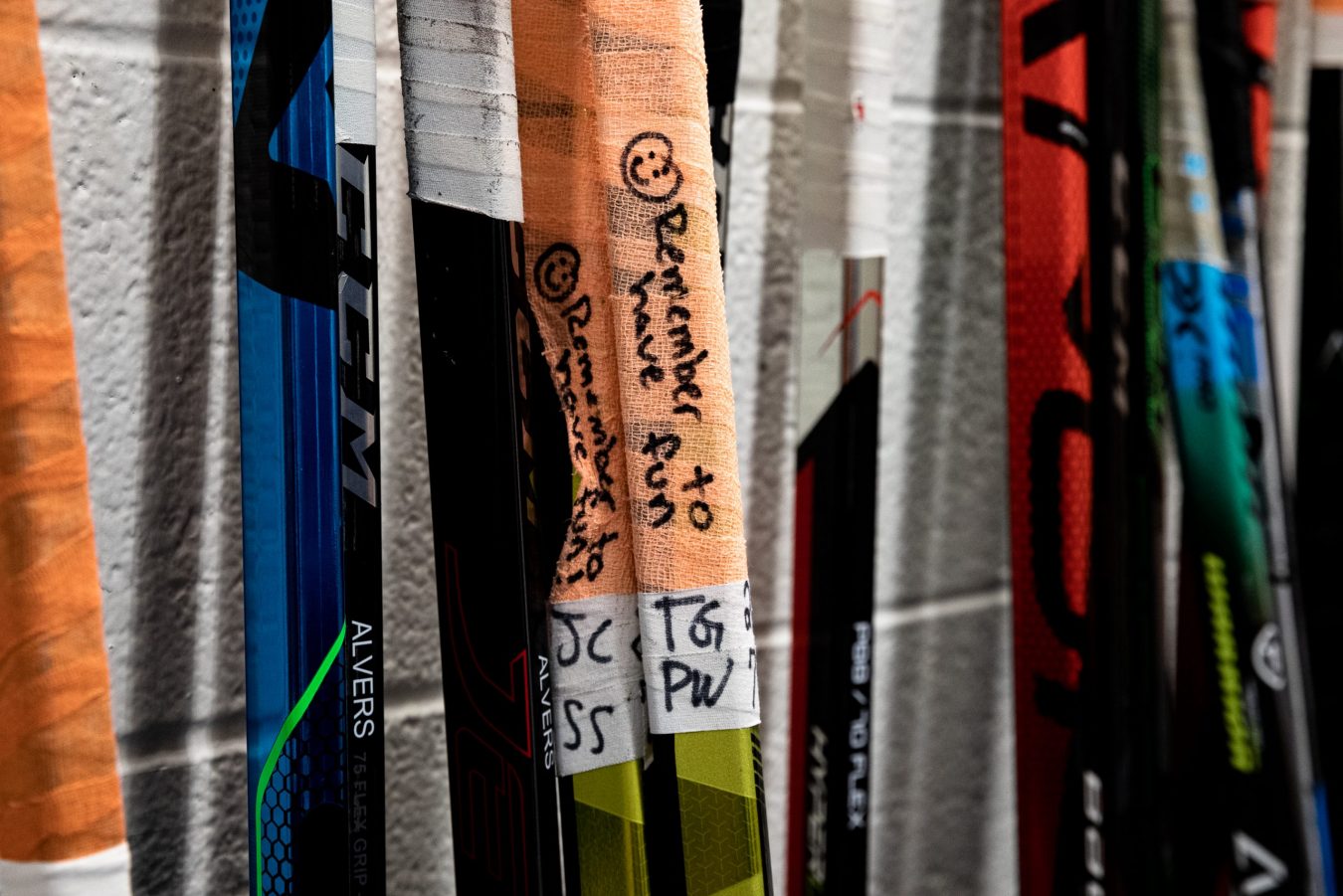
Despite having an operating budget of around $120,000 – thanks, in large part, to the dues paid by the players on the team – the team still receives the same amount of funding from the university, about $20,000, as much smaller clubs do. The team falls into a gray area where it’s not quite on the level of an NCAA team, but it’s considerably larger than other clubs sponsored by Syracuse like curling and Spikeball.
“We would like to see some sort of middle ground where, as a highly competitive club, we would receive more benefits,” Murphy explained. “It’s certainly doable and a lot of the teams that we compete against have it like that.”
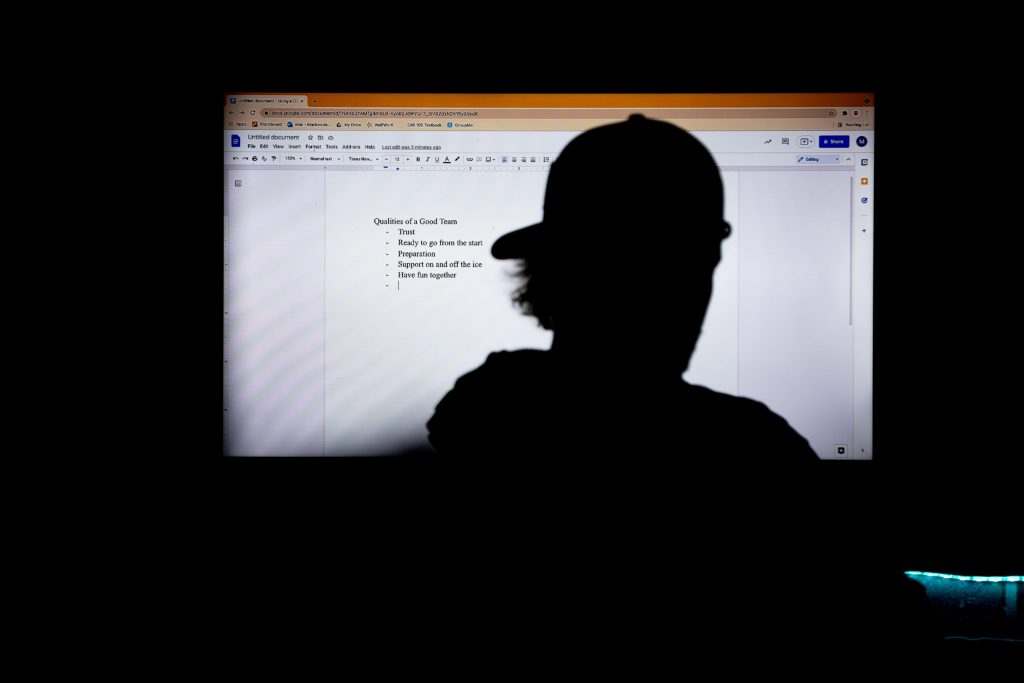
The university’s stingy support of Syracuse’s club hockey team puts it at a competitive disadvantage against teams that receive more funding. Top club programs in the country, like Liberty, are consistently near the top of the standings because of the increased support they receive from the schools. The Flames finished as the fifth-ranked team in the country this year and play in an arena that can fit 4,000 people.
Syracuse, on the other hand, plays in an arena that has four rows of seats and opened the season by winning three of its first 10 games, two by an opponent’s forfeit. The Orange finished the year 6-20 and missed its conference tournament. But if the older players on the team have learned anything, it’s that the experience of club hockey goes far beyond the wins and losses.
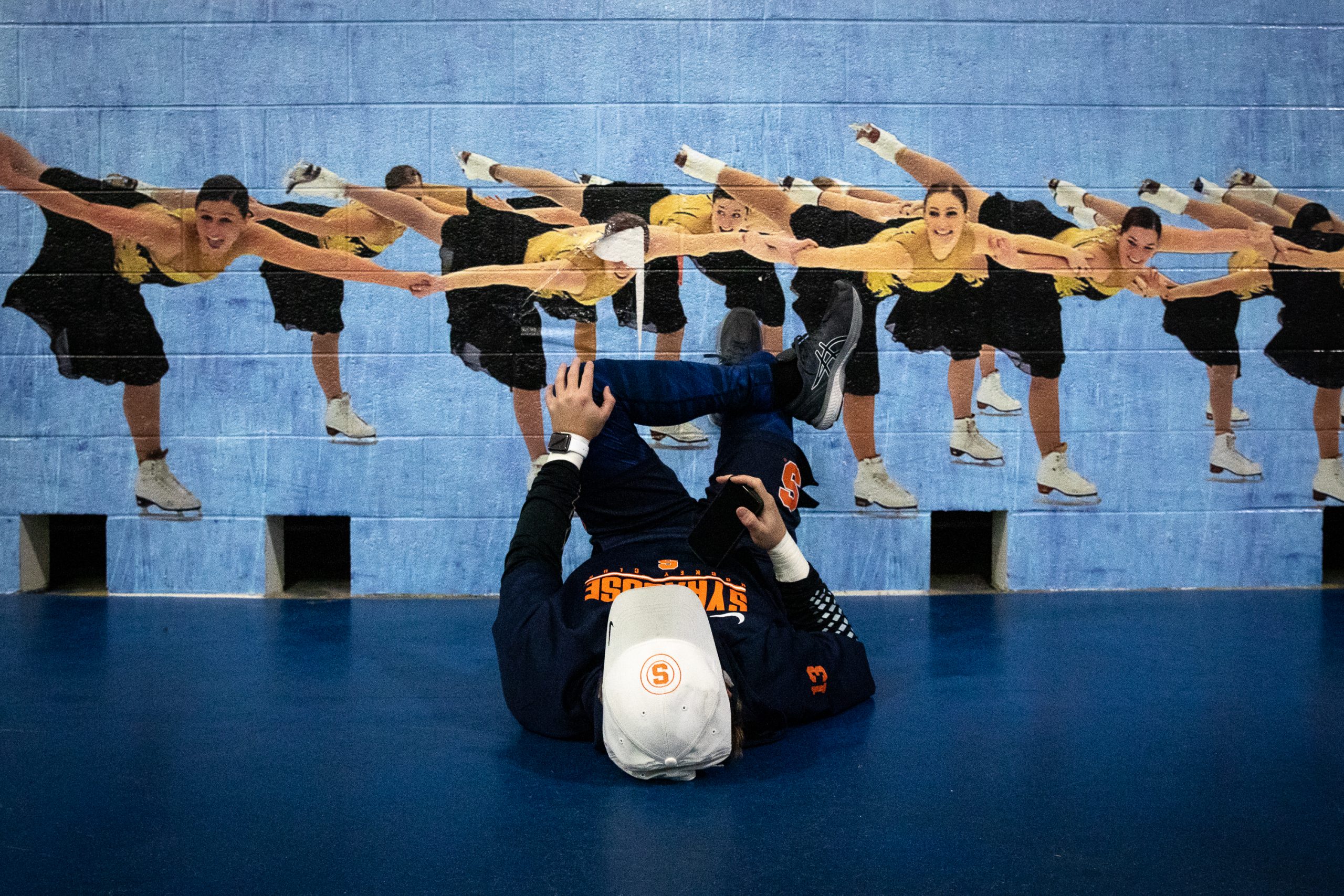
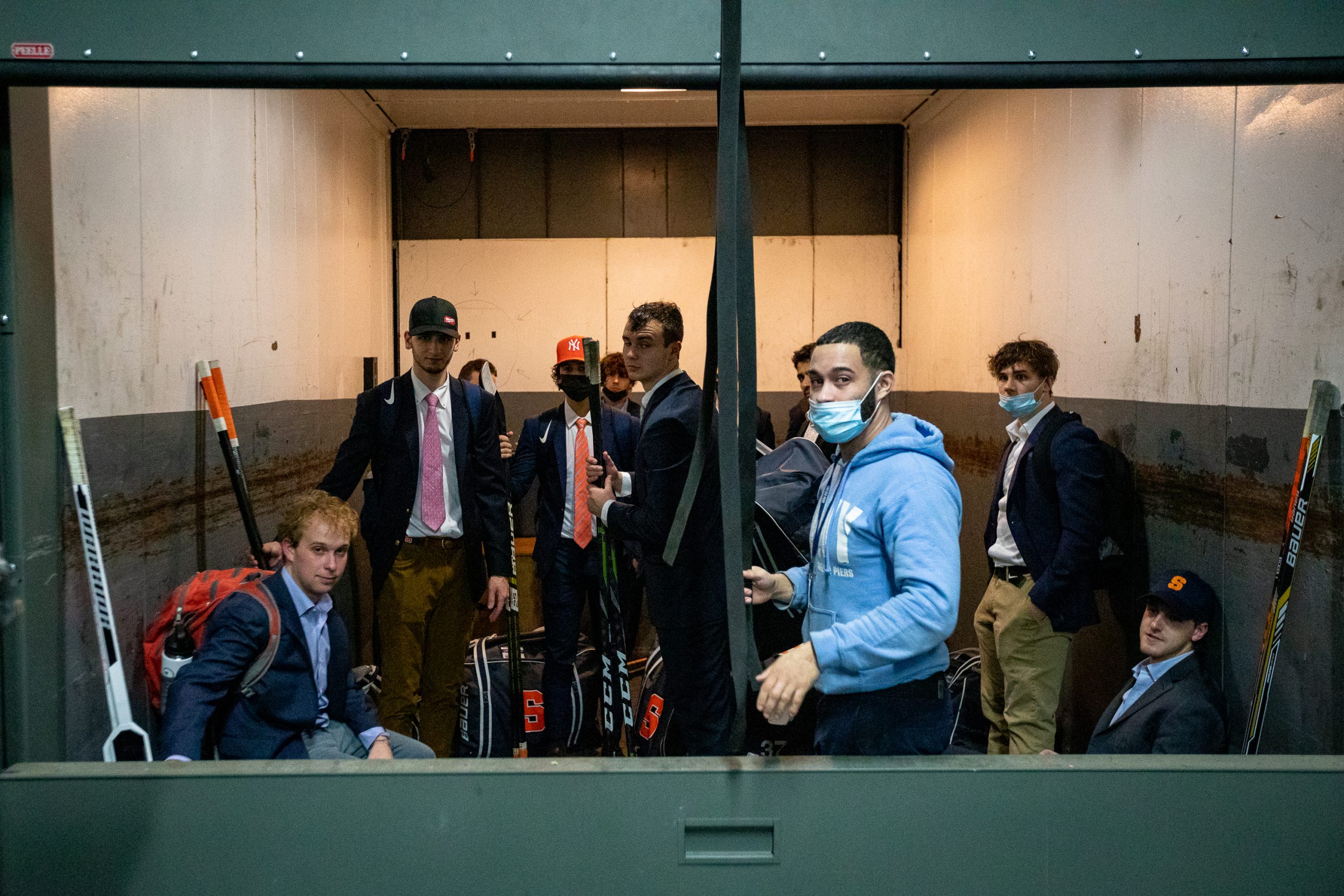
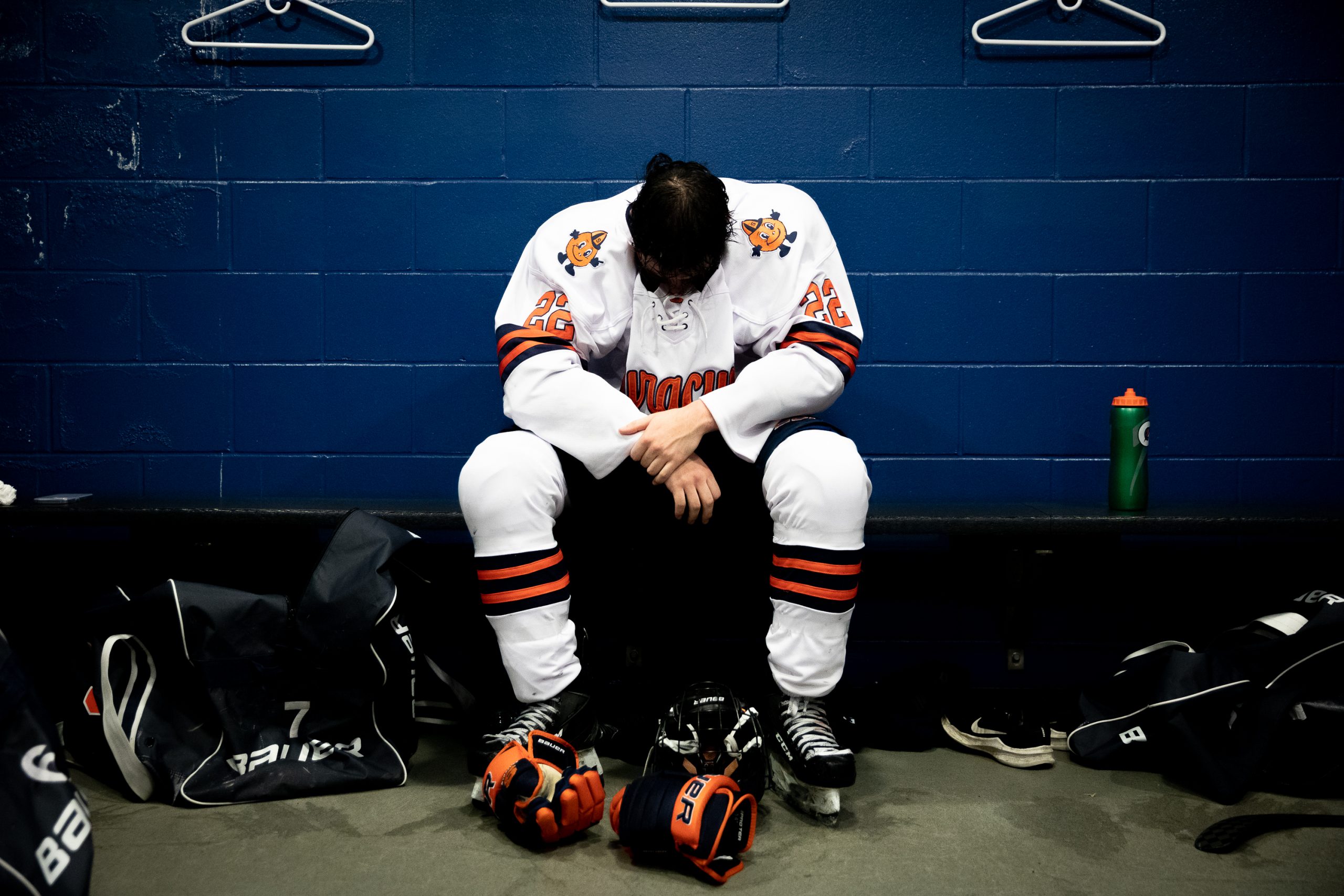
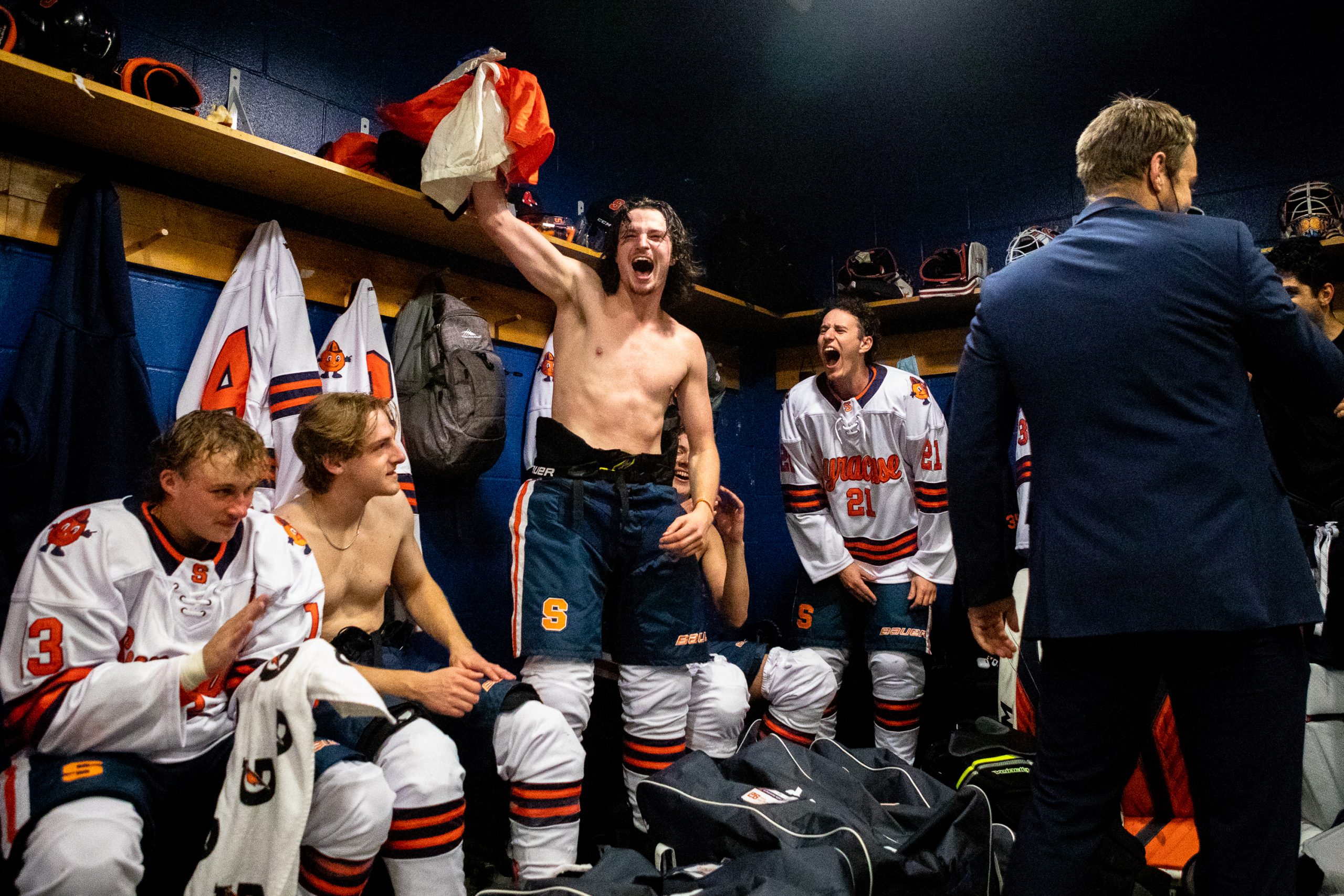
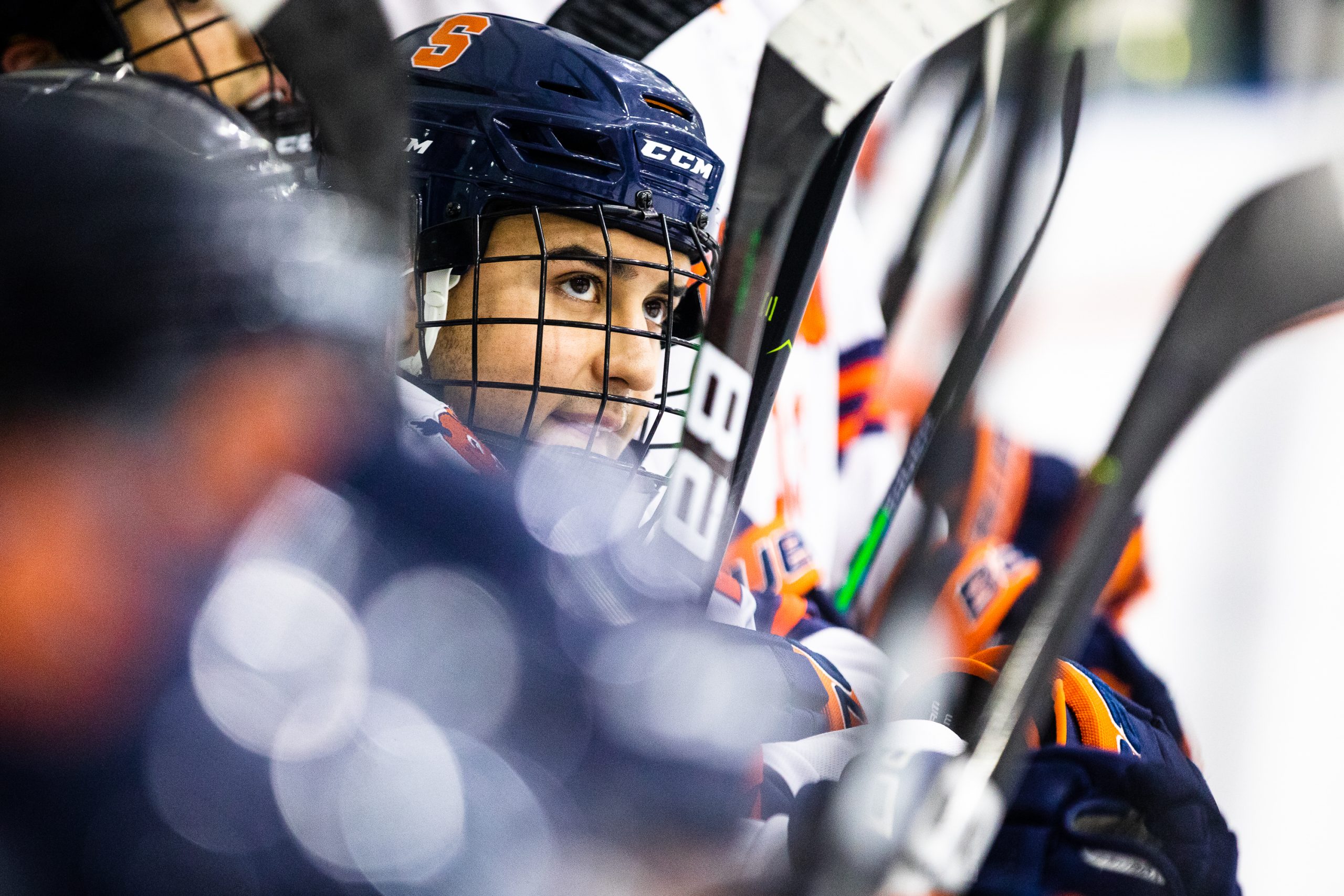
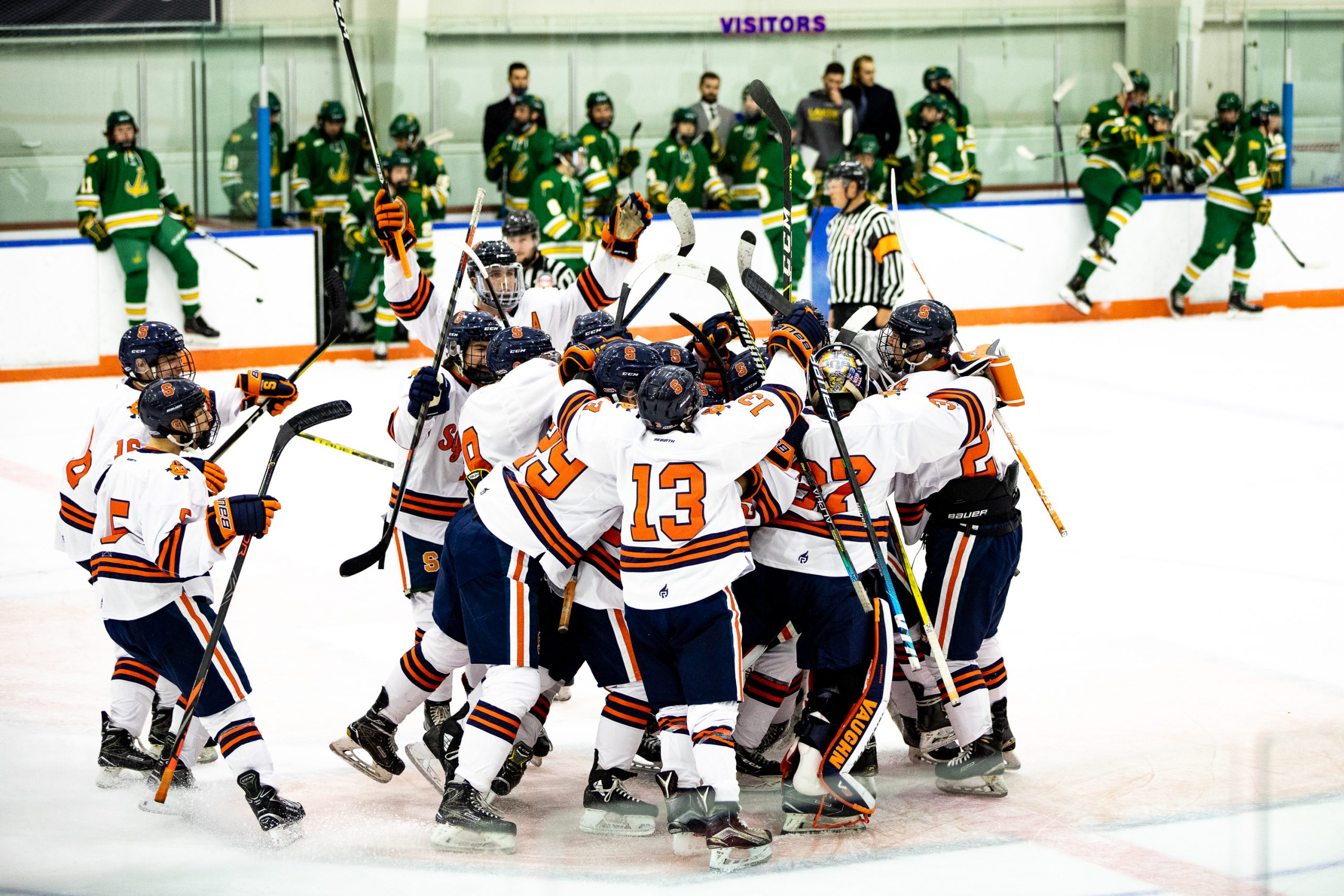
“When you see what we have to go through compared to the teams that we play, I would take the results we got this year in a heartbeat,” Murphy said. “We’re up against it when it comes to resources, what we have to offer on campus, and everything we have to do just to compete on the ice. But I wouldn’t trade it for the world.”
At the end of the day, the 31 players, who juggle coursework, jobs and other responsibilities, spill onto the ice six days a week for practices and games and still love hockey the same way they did when they first laced up the skates years ago. The battles with the school over the logo and the difficulties of running the team don’t diminish the players’ enthusiasm for the game itself – it may even enhance it.
“The guys who play club hockey,” Murphy said, “love playing hockey more than anyone else in the world.”
